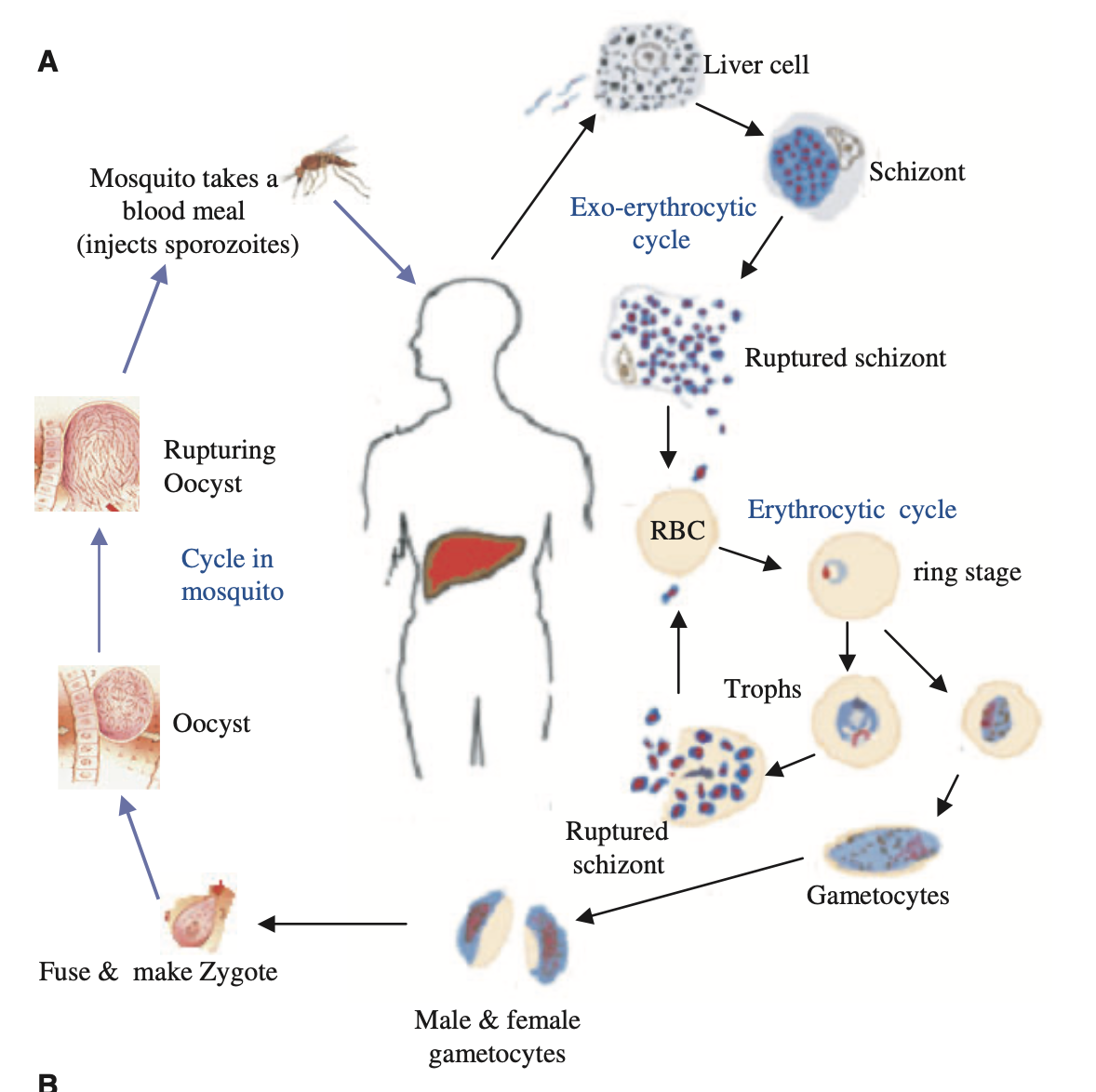Life cycle of the malaria parasite
The malaria parasite has a very complex life-cycle. Part of the complexity is that the parasite must survive in vertebrates (i.e. humans) and in invertebrates (i.e. the mosquito). The image below is the summary of the entire cycle[@tuteja2007Malaria − an overview]

It starts with the bite of a mosquito (anopheles). The parasite sporozoites are present in the salivary gland, and enter the human bloodstream. They reach the liver and undergo asexual replication (exo-erythrocytic schizogony).
Each sporozite gives rise to tens of thousands of merozoites inside the liver cells, and each one of them can invade a red blood cell. Apparently, at this stage, the infected host cells in the liver release the merosomes that act as a protective carrier that goes undetected by the immune system.
Afterwards, the merozoites enter red blood cells (erythrocytes) by a complex biochemical process of recognition, attachment and fusion. Interestingly, the parasites can't degrade heme by-product and free heme is potentially toxic to the parasite. During hemoglobin degradation, most of the liberated heme is polymerized into hemozoin.
After this stage, the infected red blood cells continue to produce merozoites (around 50 per cell) that will invade other cells. The cycle seems to be synchronous and the merozoites are released at the same time every day. In this stage, the temperature of the infected person increases.
A proportion of the merozoites differentiate to produce micro and macrogametocytes which have no function in the human host but are essential to transmitting the infection to other hosts through the anopheles mosquitoes. The time it takes to produce the first gametocytes varies by species, but is in the order of days or months.
If a mosquito ingests the gametocytes, after another complicated cycle within the mosquito's gut, the gametes form a zygote. Eventually, the sporozoites reach the salivary glands of the mosquitoes and the cycle restarts.
See also: Apicomplexan life cycle
Backlinks
These are the other notes that link to this one.
